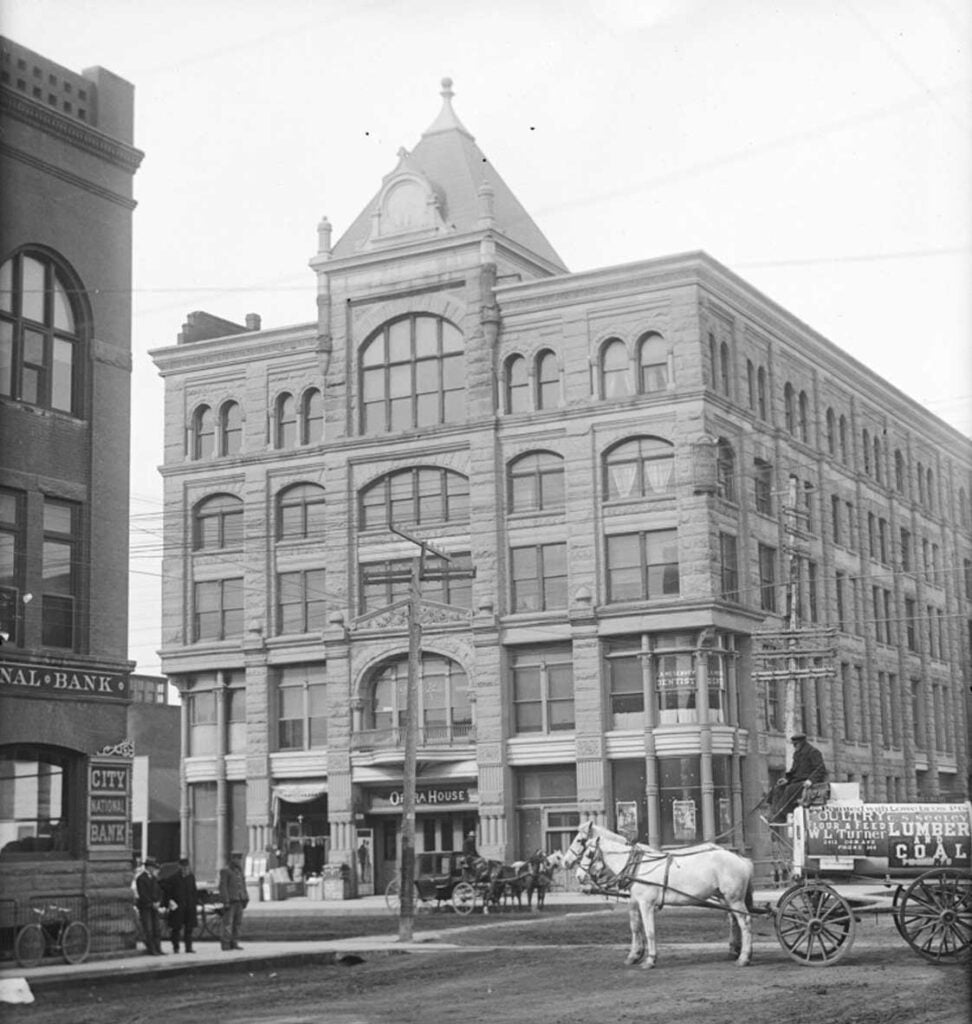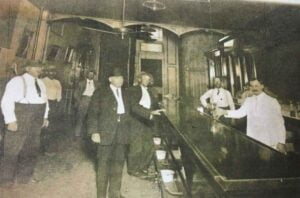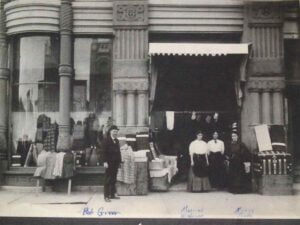
How has Kearney encouraged and supported such longevity and expertise in its music community? Music has been an essential part of the Kearney community since its pioneer days. Its vibrant beginnings with the Opera House (1891- 1954) providing national entertainment to the small community as well as today’s bands bringing contemporary Americana music – pop, rock, jazz, blues.
The Opera House encouraged local musician’s collaboration and friendship, and supported the venues that provided stages and corners for musicians to give back their music to the community. The Kearney Opera House provided the music spirit that sets the stage for our pleasure and appreciation of the Kearney music artistry today.
Before the Opera House, Kearneyites attended operas and plays performed over the local ice rink. The Opera House not only provided warm entertainment but also was a vital center for the community – its social, educational, and business lives. Imagine in 1895, a few men went to Leibee Bros Beer Parlor on the first floor; others attended their regular social club meetings; at 8:28pm the Midway Orchestra would perform in the theatre. Then such a performance brought out Kearney residents in their finest, to walk up the marble steps to the second floor entrance – and this event was central to entertainment in a burgeoning the Western frontier community. The opening was described as an expression of pride all Kearney felt in her most beautiful building.
Community offices were located in the Opera House – Kearney and Black Hills railroads’ and attorneys’ offices, the National Bank, social club offices, such as Buffalo Club of Kearney’s prominent businessmen, Chamber of Commerce. Also weddings, graduations, local musical and theatrical events. The venue drew off the road, traveling troupes from road and railway circuits: Faust, Uncle Tom’s Cabin, Ben Hur, Shakespeare – 15c admission.
Originally located on 21st Street and Central Ave, the Kearney Opera House was built in 1891 at the peak of Kearney’s boom period. The five-story structure represented the quickly progressing community that had so much potential early on. All lighting was of the open gas-flame type. Gas jets were electrified to make the place reminiscent of the 1890’s Many well-known persons, such as William Jennings Bryan, Carrie Nation, Harry Houdini, Otis Skinner, and other prominent performers came from all across the country to the Opera House. By the 1920s, the early success and stardom shifted toward a struggle to keep the doors open. Instead of the national and international spectacles it once had, the Opera House soon gave way for cheap movie nights and less prominent performances by local drama clubs and musicians, and traveling wrestling shows. The last official stage event came in 1932 and then it was left to sit vacant for over twenty years. Only the offices on the main level were largely utilized until the final demolition of the building came in 1954. Now located where Bruce Furniture is today, the Kearney Opera House is still remembered by some of locals who briefly were inside or recall when the building was torn down.



 Kearney Opera House
Kearney Opera House